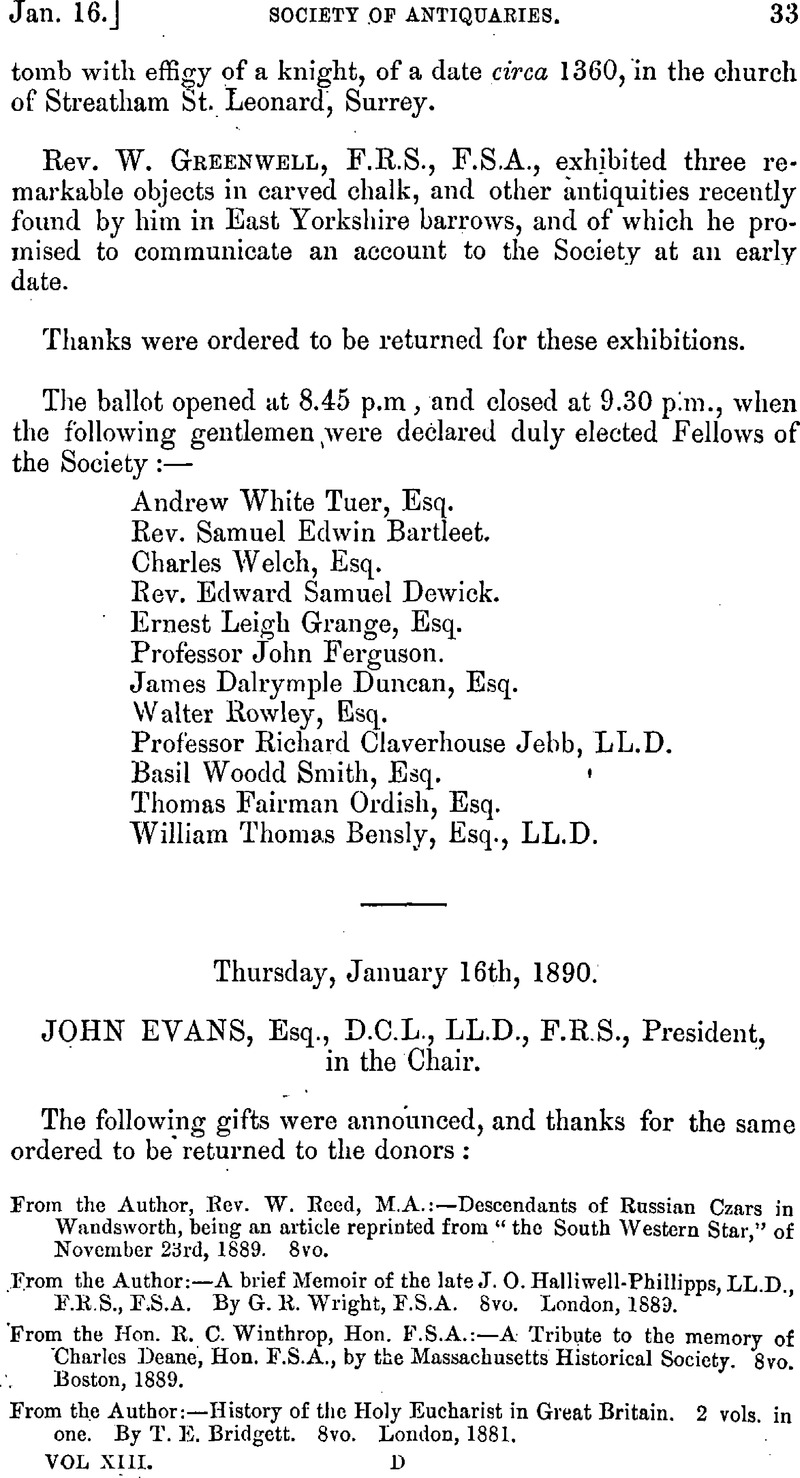No CrossRef data available.
Article contents
Thursday, January 16th, 1890
Published online by Cambridge University Press: 10 May 2010
Abstract

- Type
- Proceedings
- Information
- Copyright
- Copyright © The Society of Antiquaries of London 1891
References
page 34 note * I retain this word as possessing established literary status in this sense, and not being in any way wrong or misleading. It has been proposed to revive “casement,” an equally good word at one time in use. Cf. the covenant for making the tomb of Richard Beauchamp, earl of Warwick, in 1454 : “Two narrow plates to go round the stone. … Either of the said long plates for writing shall be in bredth to fill justly the casements provided therefore.” (Dugdale's Warwickshire, 445.)
page 35 note * Rites of Durham. Surtees ed. 47 ; Archaeologia, xlv. 385.
page 35 note † Archaeologia, xlv. 392, 393.
page 36 note * The MS. has crosiers, not crosier's.
page 36 note † A northern word for a flat tombstone ; the word is used again in Rites, p. 51, and in Durham churchwardens' books 1630—1 and 1682—3 (Surtees Soc, vol. 84, pp. 185, 250). In Brockett's Glossary, 1846, it appears as “Thruff Stone,” a flat tombstone,” being identical in form with a synonym for bondstone, a large stone going through a wall. In the sense of tombstone it is the Saxon þruh, chest, coffin, sarcophagus, which occurs in Runic inscriptions as þɼui, Đɼui. (Stephens, O. N. Runic Mon., Glossary).
page 38 note * The first bishop who used such a seal was Thomas de Hatfield, 1345 to 1381.
page 38 note † Sir Gilbert Scott actually proposed to cover this magnificent slab with his new marble pavement, or to remove it into another part of the church. It was preserved as we now have it at the instance of one of otir Fellows.
page 39 note * Ser. tres, App. No. cclv.
page 39 note † Page 34.
page 41 note * In the part of Sanderson's volume which is taken from Cox's Magna, Britannia.
page 43 note * The word here means transept.




